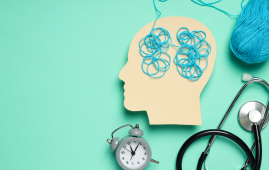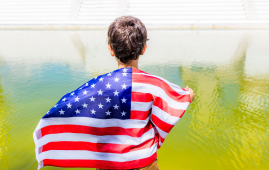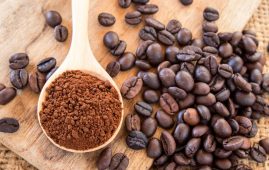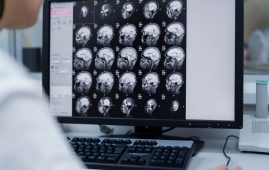

Recent studies have shown that practices like meditation and exposure to art or nature can positively affect brain health and emotional well-being. However, most research has examined these practices separately rather than comparing their effects on brain activity. A new study from the University of California, Los Angeles (UCLA), takes a groundbreaking approach by comparing the brain activation patterns triggered by transcendental meditation, nature videos, and digital art, offering a new perspective on their impact on mental health.
Published in Frontiers in Human Neuroscience, the study analyzed how these three experiences—meditation, nature, and digital art – influence brain activity. The team recruited nine healthy adults with low stress and anxiety, exposing them to various video stimuli inside an fMRI scanner. Participants practiced transcendental meditation while viewing star nebula videos, watched nature videos of national parks, and viewed digital art created by renowned artist Refik Anadol.
Dr. Helen Lavretsky, the study’s senior author, noted that the brain regions activated by each type of experience were distinct. Meditation led to increased blood oxygen-level dependent (BOLD) responses in areas associated with sensory, memory, and object processing. These effects were notably different from the responses to nature and digital art videos.
Compared to rest, meditation activated the bilateral occipital and fusiform gyri, along with the hippocampus. When compared to nature or digital art, meditation triggered different regions, including the left parietal operculum and bilateral postcentral gyri, revealing how each activity uniquely impacts brain function. Notably, the brain activity related to meditation was linked to memory, sensory integration, and error monitoring.
The research team hopes that their findings will inspire further studies into the potential of meditation, nature, and art to reduce stress and improve mental health. Future studies may deepen our understanding of how contemplative practices can promote well-being and serve as therapeutic tools in clinical applications.
Dr. Lavretsky and her team plan to continue exploring the role of spiritual neuroscience and neuroesthetics in the brain’s response to transcendence and stress relief.
More Information: Beatrix Krause-Sorio et al, Your brain on art, nature, and meditation: a pilot neuroimaging study, Frontiers in Human Neuroscience (2025). DOI: 10.3389/fnhum.2024.1440177
more recommended stories
 Parkinson’s Disease Care Advances with Weekly Injectable
Parkinson’s Disease Care Advances with Weekly InjectableA new weekly injectable formulation of.
 Brain’s Biological Age Emerges as Key Health Risk Indicator
Brain’s Biological Age Emerges as Key Health Risk IndicatorClinical Significance of Brain Age in.
 Children’s Health in the United States is Declining!
Children’s Health in the United States is Declining!Summary: A comprehensive analysis of U.S..
 Autoimmune Disorders: ADA2 as a Therapeutic Target
Autoimmune Disorders: ADA2 as a Therapeutic TargetAdenosine deaminase 2 (ADA2) has emerged.
 Is Prediabetes Reversible through Exercise?
Is Prediabetes Reversible through Exercise?150 Minutes of Weekly Exercise May.
 New Blood Cancer Model Unveils Drug Resistance
New Blood Cancer Model Unveils Drug ResistanceNew Lab Model Reveals Gene Mutation.
 Healthy Habits Slash Diverticulitis Risk in Half: Clinical Insights
Healthy Habits Slash Diverticulitis Risk in Half: Clinical InsightsHealthy Habits Slash Diverticulitis Risk in.
 Caffeine and SIDS: A New Prevention Theory
Caffeine and SIDS: A New Prevention TheoryFor the first time in decades,.
 Microbial Metabolites Reveal Health Insights
Microbial Metabolites Reveal Health InsightsThe human body is not just.
 Reelin and Cocaine Addiction: A Breakthrough Study
Reelin and Cocaine Addiction: A Breakthrough StudyA groundbreaking study from the University.

Leave a Comment